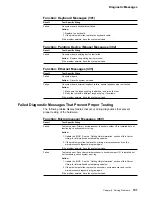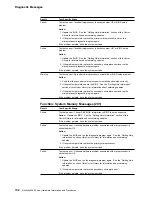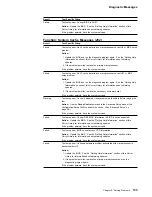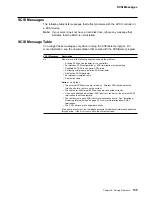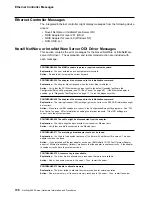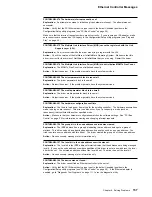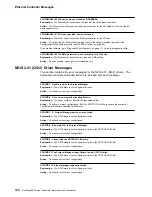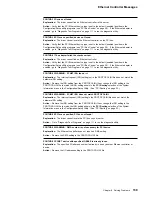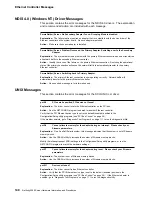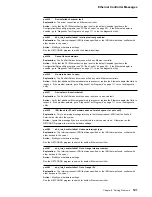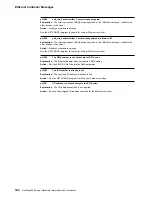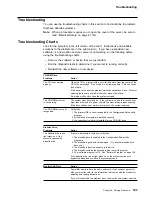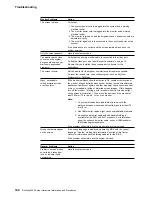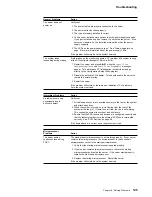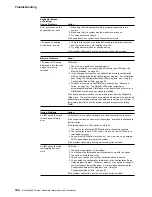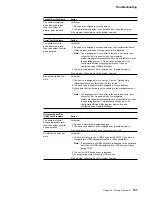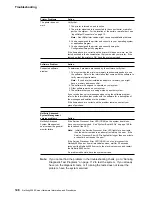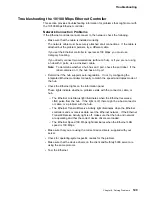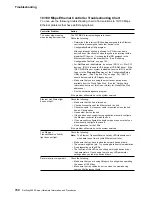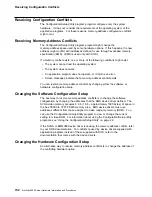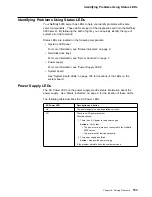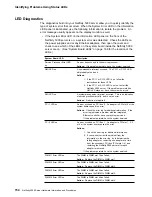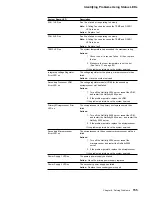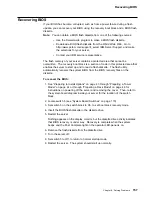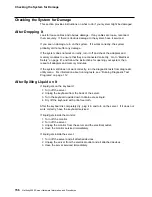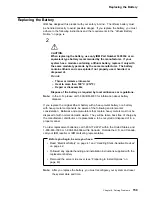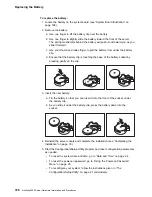
Troubleshooting
General Problems
Action
The server does not
power on.
Verify that:
1. The power cables are properly connected to the server.
2. The power outlet functions properly.
3. The type of memory installed is correct.
4. You have not installed more options than the power supply supports.
If you just installed an option, remove it, and restart the server. If the
server now powers on, you installed more options than the power
supply supports.
5. The LEDs on the power supply are on. See “Status Indicators” on
page 9 for more information about the power supply LEDs.
If the problem still exists, have the system serviced.
The system stops
responding during startup
If information on the monitor suggests a PCI problem (the system is hung
at the PCI configure checkpoint, which is 0x1e):
1. Restart the server and press Alt+F1 when the
Press F1 for
Configuration/Setup
and
Press F2 for Diagnostics
messages
appear. This will bypass PCI initialization (except video) and go
directly to the Configuration/Setup Utility program.
2. Disable the defective PCI adapter. This should enable the server to
complete a normal startup.
3. Restart the server.
If the problem still exists, or there was no indication of PCI problems,
have the system serviced.
Intermittent Problems
Action
A problem occurs only
occasionally and is
difficult to detect.
Verify that:
1. All cables and cords are connected securely to the rear of the system
and attached options.
2. When the system is turned on, air is flowing from the rear of the
system at the fan grill. If there is no air flow, the fan is not working.
This causes the system to overheat and shut down.
3. Ensure that the SCSI buses and devices are configured correctly and
that the last external device in the external SCSI bus is terminated
correctly. See “SCSI Devices” on page 58.
If the items above are correct, have the system serviced.
Microprocessor
Problems
Action
The server emits a
continuous tone during
POST.
The startup (boot) microprocessor is not working properly. If your server
contains two microprocessors, the microprocessor in the secondary
microprocessor socket is the startup microprocessor.
1. Verify that the startup microprocessor is seated properly.
2. If your server contains two microprocessors, remove the startup
microprocessor and restart the server. If the server starts properly,
replace the old startup microprocessor.
3. Replace the startup microprocessor. Restart the server.
If the problem still exists, have the system serviced.
Chapter 6. Solving Problems
145

